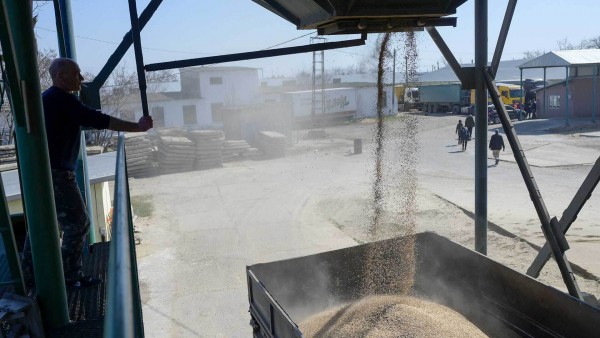Russian Attack on Ukraine Also Targeted Global Food Supply
GEOG Researchers Predict that Poorer Nations Will Suffer Most as Chaos Grips Agriculture in Black Sea Region
Talks this week in Istanbul are raising hopes for a negotiated end to Russia’s brutal invasion of Ukraine, but should they fail, the pain of the conflict could soon spill beyond the borders of a country where cities are still being destroyed and civilians slaughtered.
Wheat prices in various markets spiked about 70% soon after last month’s outbreak of war in the region, a key supplier of grains and other commodities to the international market, and now are running 40% or more above February prices. A supply slowdown that might only bump up inflation in wealthy nations could create catastrophic outcomes in poorer ones, ranging from political unrest to deadly famines for areas that depend on Ukrainian and Russian crop imports.
Maryland Today spoke to several University of Maryland experts on the region’s agriculture and global grain markets, including geographical sciences and College of Information Studies Assistant Professor Sergii Skakun, a native of Ukraine who works on several satellite-based remote sensing projects directed at the country, and Inbal Becker Reshef, NASA Harvest’s program director and research professor in the Department of Geographical Sciences
Here’s their take on how the war in Ukraine has already impacted global food security—and how it could get much worse if the attack continues.
The Black Sea region is central to the world’s food supply.
Together, Ukraine and Russia account for about 30% of the world’s wheat and barley exports, nearly 20% of corn exports, 80% of sunflower oil and 20% of canola oil. More than 10% of Ukraine’s land is devoted to the vital crop of winter wheat, Skakun said—well over twice the land area of the state of Maryland. As well, the region is a leading global supplier of nitrogen fertilizer.
North Africa and the Middle East countries rely heavily on grain exports from the Black Sea region—and many of them have already been struggling with food security issues. Particularly hard-hit is Yemen, which reportedly buys 27% of its wheat from Ukraine, and where millions are already teetering on the brink of famine because of an ongoing civil war and global supply chain issues brought on by COVID-19.
Agriculture in Ukraine is being disrupted—but it’s still unclear to what extent.
In a normal year, several things would be happening now in the fields of Ukraine, Skakun said: Farmers would be applying manure or other fertilizers to revive dormant winter wheat; they’d also be planting spring and summer crops like sunflower and corn. In June and July, the winter wheat harvest should begin, followed by new planting in the fall.
Although satellite monitoring has limited ability to assess how much of this work is just beginning, it’s probably greatly diminished, and it’s uncertain how much of the country’s normal farm operations will be able to proceed throughout the year. The result could be drastically reduced output. “Russia has been bombing chemical enterprises that produce fertilizers, they’re bombing fuel depots, they’re bombing everything,” Skakun said. “Given this behavior, no one would be surprised if they started targeting people working in the fields.”
Other areas may be able to increase exports, but there are limits.
The NASA Harvest program—which uses a broad range of U.S. government, international and commercial satellite data to aid in agricultural monitoring—is monitoring crop conditions in other areas of the world that grow and export the products expected to plummet or not be exported from Ukraine, Becker-Reshef said. India, a major wheat producer, currently has good crop conditions; on the other hand, U.S. grain-producing regions including the Southern plains, and parts of Europe and South America are experiencing droughts, adding uncertainty to the current situation. Ukraine itself could experience serious hunger should the conflict drag on—echoing a Soviet-engineered famine known as the Holodomor that killed nearly 4 million Ukrainians in early 1930s.
Becker-Reshef, who worked on developing satellite-driven wheat production forecasting models in Ukraine while working on her Ph.D., said the NASA Harvest program will also contribute detailed satellite-derived data products on Ukrainian agriculture production to the Ukrainian government. While these data are considered too sensitive to release publicly at the moment, the program could inform decisions that help secure a steady flow of food in the country and beyond. “It’s important to have a global perspective on food security issues,” she said. “First COVID and now this war demonstrates the value satellite data can offer to providing a global, transparent and timely view of agricultural conditions and prospects, especially when ground data becomes difficult or dangerous to access.”
For more insight from UMD experts, read the full article from Maryland Today.
Photo by Bulent Kilic/AFP via Getty Images
Published on Wed, 03/30/2022 - 11:32


